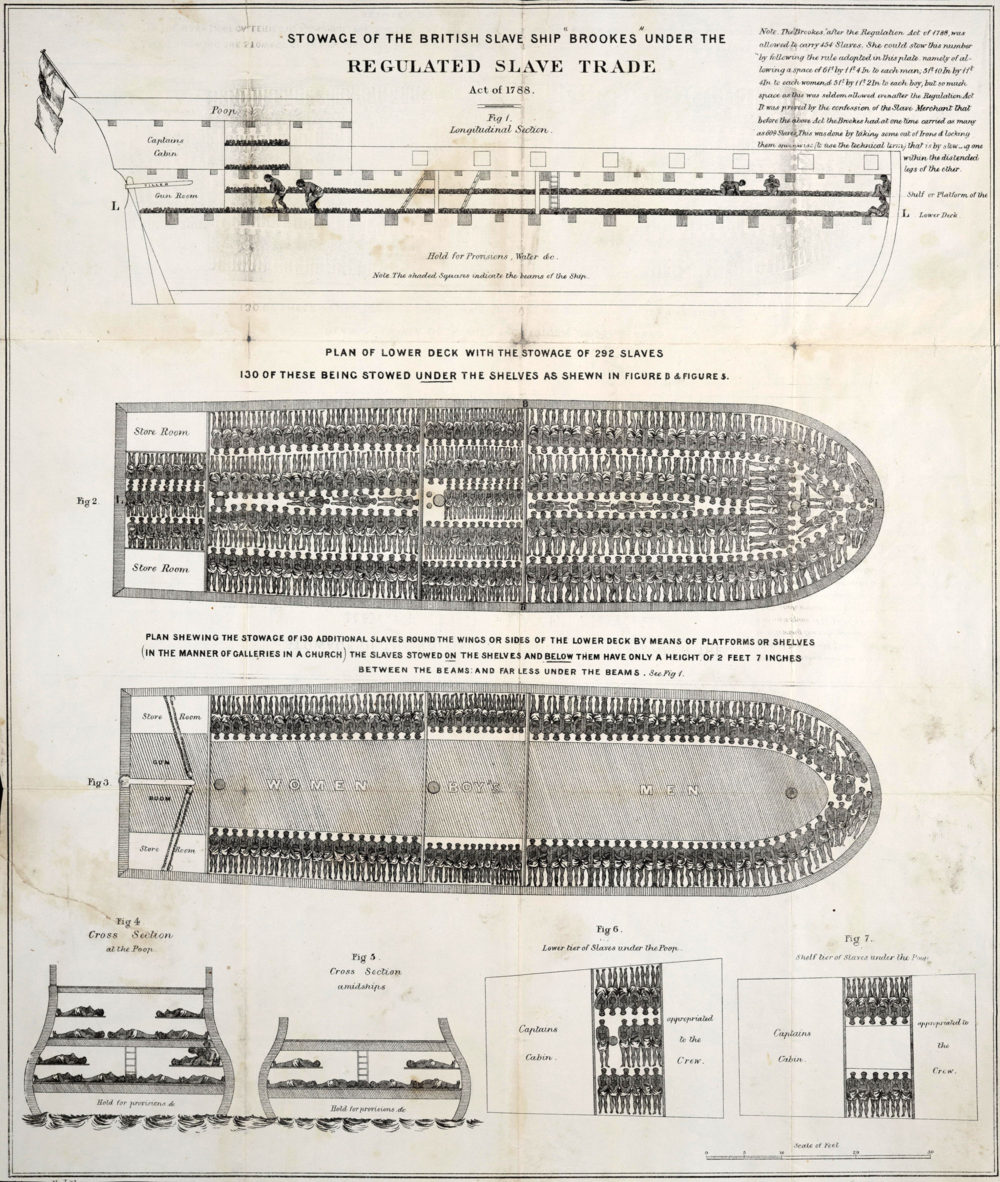
“Stowage of the British slave ship Brookes under the regulated slave trade act of 1788,” 1789, via Wikimedia. Slave ships transported 11-12 million Africans to destinations in North and South America, but it was not until the end of the 18th century that any regulation was introduced. The Brookes print dates to after the Regulated Slave Trade Act of 1788, but still shows enslaved Africans chained in rows using iron leg shackles. The slave ship Brookes was allowed to carry up to 454 slaves, allotting 6 feet (1.8 m) by 1 foot 4 inches (0.41 m) to each man; 5 feet 10 inches (1.78 m) by 1 foot 4 inches (0.41 m) to each women, and 5 feet (1.5 m) by 1 foot 2 inches (0.36 m) to each child, but one slave trader alleged that before 1788, the ship carried as many as 609 slaves.